Keith Gervasi
Reviews By Author
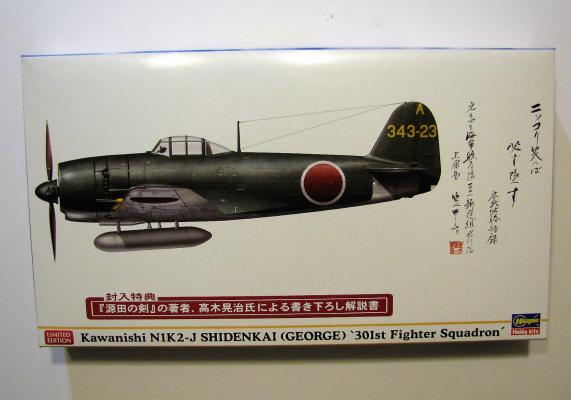
|
Kawanishi N1K2-J SHINDENKAI (George) '301st Fighter Squadron'Published:
HistoryThe N1K was originally developed as a floatplane for forward land bases but by the time it entered service Japan was on the defensive. Kawanishi engineers had proposed in 1941 that the N1K could be a formidable land-based fighter too and a land-based version N1K1-j (J indicated land based fighter modification of the original floatplane version) was produced as a private venture by the company and first flew in December 1942. Due to it being a mid-wing design (because of the floats & large prop) a new design was begun just 4 days after the first test flight. The major defects being addressed were the wing and long landing gear. The wings were moved to a low position, which permitted the use of shorter, conventional undercarriage, the fuselage was lengthened and the… more |
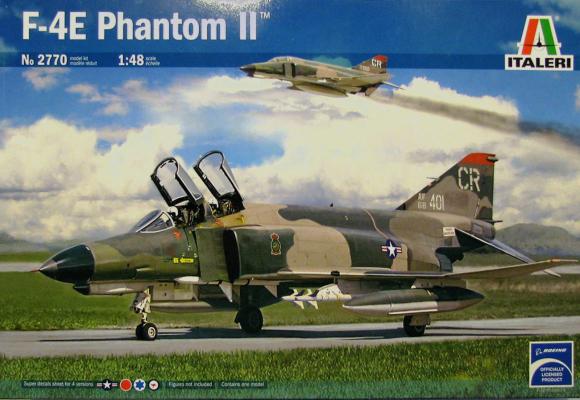
|
F-4E Phantom IIPublished:
Developed by the McDonnell Douglas Company, the F-4 Phantom II is a tandem two seat, all-weather, supersonic fighter-bomber. It is one of the most famous aircraft in military aviation history. The F-4 entered service in 1960 with the U.S. Navy but was also adopted by the USMC and USAF. The F-4 stayed in the service of the U.S. military until 1996, but other countries have kept it in use up to 2017 (Japan). The F-4E version, specifically developed for the USAF, adopted a M61 Vulcan cannon in the nose, and it could be armed with AIM-9 sidewinder and AIM-7 Sparrow air to air missiles to perform air-superiority missions. With two GE J-79 engines, the F-4E could reach the top speed of 1,240 knots (1426 mph). Speed, thrust, and reliability were the Phantom II strengths able to successfully… more |
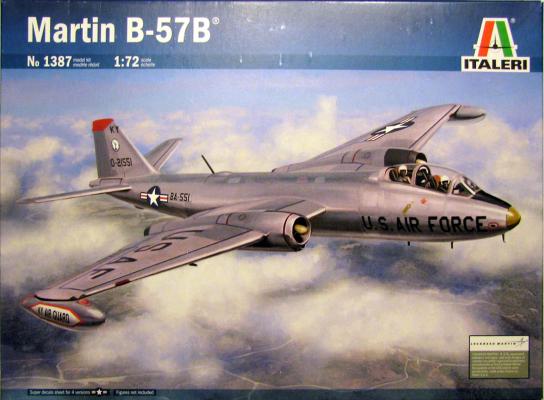
|
Martin B-57BPublished:
HistoryCreated to replace the piston-engined B-26 Invader, the twin jet engine tactical bomber B-57 Canberra was produced by US aircraft company Martin in the 1950s. Derived from the British aircraft EE Canberra it was produced in several versions to perform not only bombing but recon, electronic warfare, ground attack and dive bombing duties. The B-57B, developed for bombing missions, was the main version produced. It was characterized by the adoption of a new cockpit with two crew members arranged in tandem and under-wing hardpoints able to be armed with a wide range of weapons. The first units produced were armed with eight 12.7mm machine guns installed within the wings and later substituted with four 20mm cannons. The KitOriginally released in 1985, it… more |
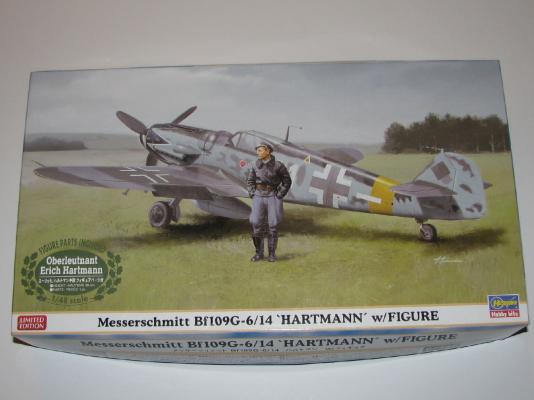
|
Messerschmitt Bf109G-6/14 ‘HARTMANN’ w/FigurePublished:
HistoryThe Bf109G-5 and -6 fighters were produced in parallel and were pressurized and non-pressurized versions of the same fighter. The G-6 was most widely produced variant and remained in service till the end of the war. Erich Hartmann was probably the most famous pilot to fly the Bf 109 and is the highest scoring ace in the Luftwaffe. The kit: Hasegawa has released versions of the G-6 or -14 at least 12 times and nothing has changed with this boxing other than the decals. The parts are crisply molded in grey with recessed detail and little to no flash. The clear parts typical Hasegawa quality and look nice. The resin figure is very nice but has a mold seam line down the middle of his face and back of his head…this will be a pain to clean up. Construction… more |
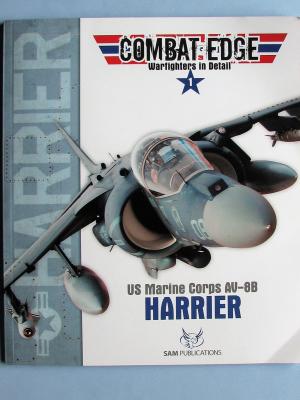
|
COMBAT EDGE - Warfighters in Detail #1: US Marine Corps AV-8B HarrierPublished:
This is the first book in a new series by SAM Publications called COMBAT EDGE and it covers the AV-8B Harrier. 8 chapters, 82 pages with a short text and VERY nice color pictures including 15 color profiles to boot! The chapters cover:
The chapters cover exactly what they are titled starting with ‘Origins’ which covers the need to upgrade the AV-8A/C so that it could carry a bigger punch. ‘AV-8B’ covers the development of the aircraft and even includes a couple pictures of the YAV-8B and, for me anyway, a cool picture of one of the Harriers that… more |
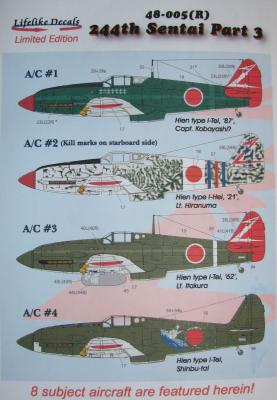
|
244th Sentai Part 3 DecalsPublished:
HistoryThe 244th Sentai was formed in 1942 from the 144th Sentai with their primary mission being homeland defense. The squadron received the Ki-61 in 1943 and gained fame as an elite bomber interceptor unit. Detachments of this unit also served on Okinawa but the majority stayed in Japan for defense. A very good web site dedicated to this squadron can be found here http://www5b.biglobe.ne.jp/~s244f/ and you will need to translate it as it is in Japanese. Lifelike decals have issued or re-issued decals for the Ki-61s of the 244th Sentai as parts 1,2 & 3. Initially produced for the Hasegawa kit, they could also be used on the Otaki kit. Now that Tamiya has released their kit you now… more |
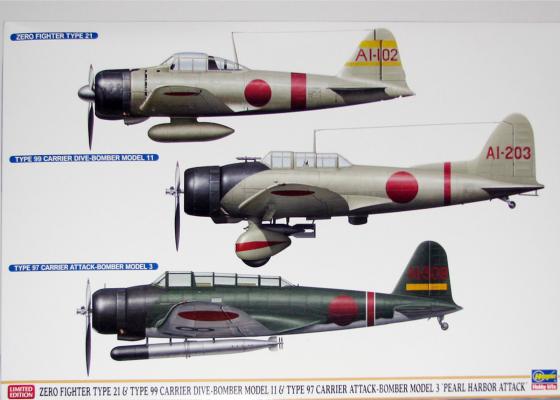
|
Pearl Harbor 75th Anniversary Set (3 kits) Limited EditionPublished:
History(From the Hasegawa site) On December 7th, 1941, Japanese fighters, dive bombers, and torpedo bombers devastated the US fleet at anchor in Pearl Harbor. Militarily, it was a resounding success. Most of America's battleship force was either burning or on the bottom and the Japanese strike force was barely bloodied. On December 8th, Roosevelt gave his speech and asked for a declaration of war. An entire nation woke up on the 9th and went to war by the millions. Now, 75 years since the day, Hasegawa brings you a three-kit set of aircraft from the IJN Carrier Akagi. The KitsUpon opening a really, REALLY big box you are presented with a lot of plastic. Each kit of grey injected plastic is bagged separately. You also have 3 instruction foldouts and one… more |

|
Ju87G-2 & JS-2Published:
HistoryJu 87G-2…The First flight of a Ju 87 occurred in 1936, and although obsolete by 1943, the airframe found a new lease on life with the addition of two 37 mm (1.46 in) Flak 18 guns under the wings. The first flight of the G model occurred on January 31st, 1943. In April of '43 the first production G models were delivered to frontline units and, even though obsolete and outnumbered, proved very successful in their role as tank killers. JS-2…. Designed as a breakthrough tank with armor that could withstand the fearsome German 88mm gun and an armament that could take on the Tiger and Panther tanks, the JS-2 (named after Joseph Stalin, IS-2 Iosif Stalin in the original Russian) entered service in 1944. Armed with a massive A-19 122mm main gun and up to… more |
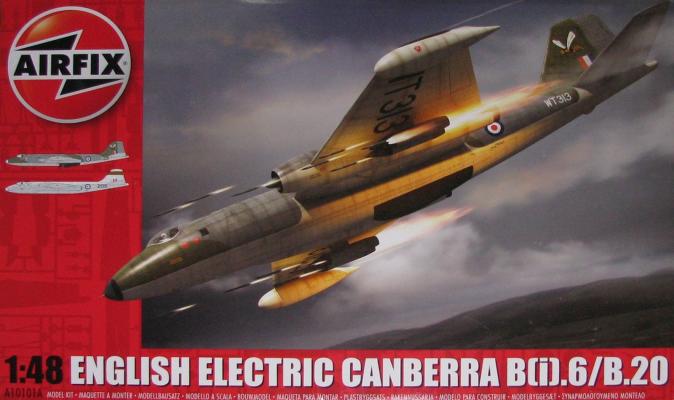
|
English Electric Canberra B(i).6/B.20Published:
HistoryThe English Electric Canberra traces its roots back to 1944 when the Air Ministry issued a requirement for a successor to the De Havilland Mosquito 'with no defensive armament and a high-altitude capability to evade interceptors'. Taxi tests began in May of 1949 and the first flight was May 13th, 1949…..and yes, it was a Friday! First delivery to the RAF was May 25th, 1951 t0 101Sqn, Binbrook and in the next 3 years, 23 squadrons received the aircraft. The Canberra proved so successful that it was exported to many other countries (15) and also built in Australia and the U.S. there were (including prototypes) 40 variants of the Canberra. The B9i).6 was the interim interdictor version for the RAF pending delivery of the B(I)8. Based on the B.6 with… more |
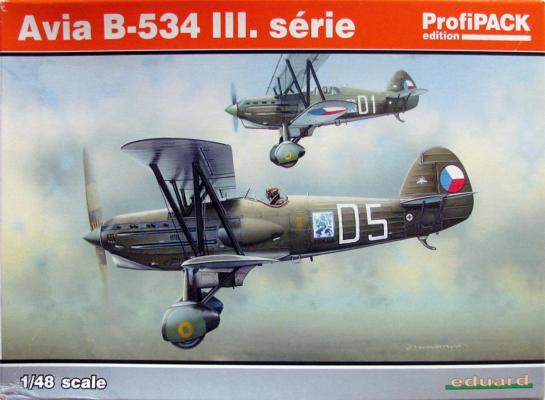
|
Avia B.534 III.seriePublished:
HistoryThe Avia B.534 was developed in 1934, and although obsolete by the time WWII started, it was used in combat as late as 1944! The 534 went through a few changes along the way, most notably the cockpit and landing gear. A 534 is credited with having been the last biplane to record an aerial victory (A Hungarian Ju 52 on Sept. 2nd, 1944). The KitInside the box are 4 sprue of grey and 1 of clear plastic, a decal sheet, photo etch fret, a sheet of painting masks and a 16-page instruction booklet. The plastic is is nice with very fine lines, little to no flash and no noticeable sink marks. The pre painted photo etch looks nice and the decals are very nice. One thing Eduard did was scale back on the photo etch fret as it looks like they give you just the… more |
